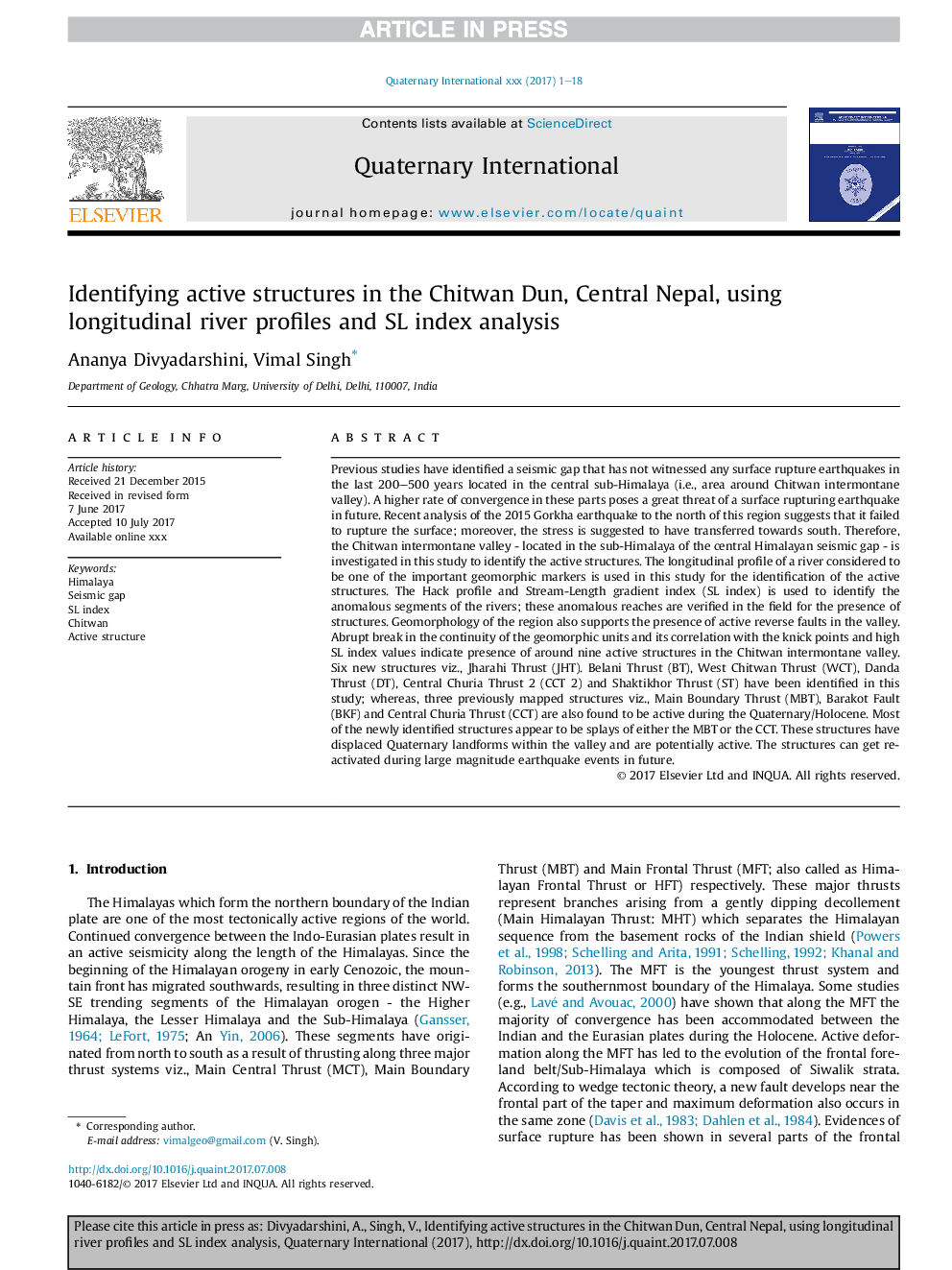| Article ID | Journal | Published Year | Pages | File Type |
|---|---|---|---|---|
| 7451110 | Quaternary International | 2017 | 18 Pages |
Abstract
Previous studies have identified a seismic gap that has not witnessed any surface rupture earthquakes in the last 200-500 years located in the central sub-Himalaya (i.e., area around Chitwan intermontane valley). A higher rate of convergence in these parts poses a great threat of a surface rupturing earthquake in future. Recent analysis of the 2015 Gorkha earthquake to the north of this region suggests that it failed to rupture the surface; moreover, the stress is suggested to have transferred towards south. Therefore, the Chitwan intermontane valley - located in the sub-Himalaya of the central Himalayan seismic gap - is investigated in this study to identify the active structures. The longitudinal profile of a river considered to be one of the important geomorphic markers is used in this study for the identification of the active structures. The Hack profile and Stream-Length gradient index (SL index) is used to identify the anomalous segments of the rivers; these anomalous reaches are verified in the field for the presence of structures. Geomorphology of the region also supports the presence of active reverse faults in the valley. Abrupt break in the continuity of the geomorphic units and its correlation with the knick points and high SL index values indicate presence of around nine active structures in the Chitwan intermontane valley. Six new structures viz., Jharahi Thrust (JHT). Belani Thrust (BT), West Chitwan Thrust (WCT), Danda Thrust (DT), Central Churia Thrust 2 (CCT 2) and Shaktikhor Thrust (ST) have been identified in this study; whereas, three previously mapped structures viz., Main Boundary Thrust (MBT), Barakot Fault (BKF) and Central Churia Thrust (CCT) are also found to be active during the Quaternary/Holocene. Most of the newly identified structures appear to be splays of either the MBT or the CCT. These structures have displaced Quaternary landforms within the valley and are potentially active. The structures can get re-activated during large magnitude earthquake events in future.
Keywords
Related Topics
Physical Sciences and Engineering
Earth and Planetary Sciences
Geology
Authors
Ananya Divyadarshini, Vimal Singh,
